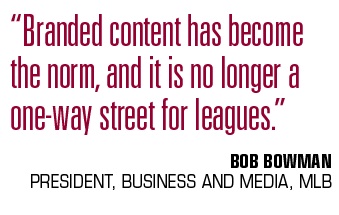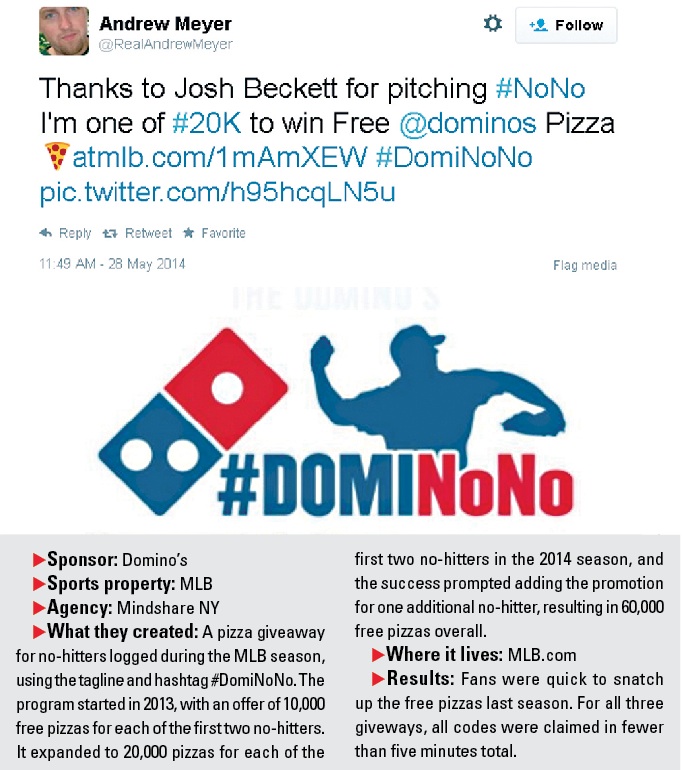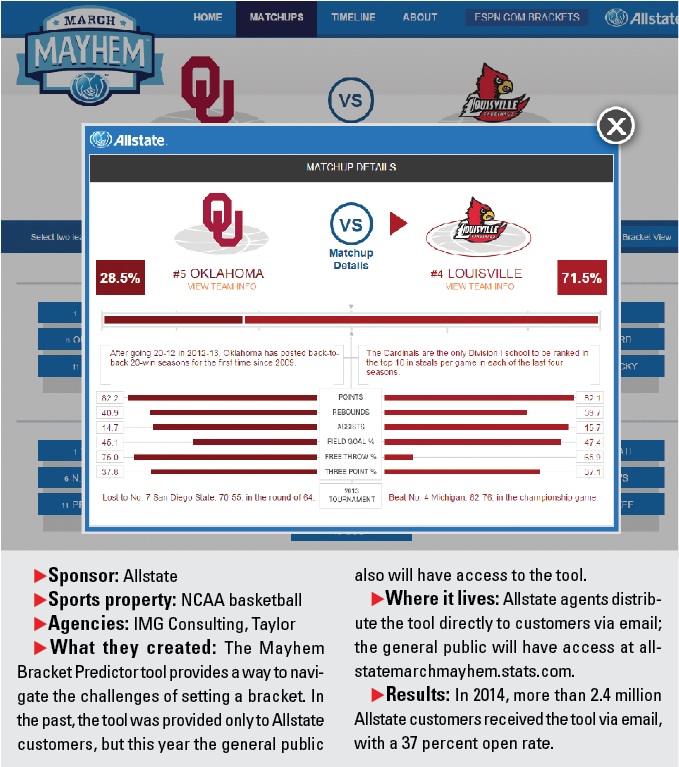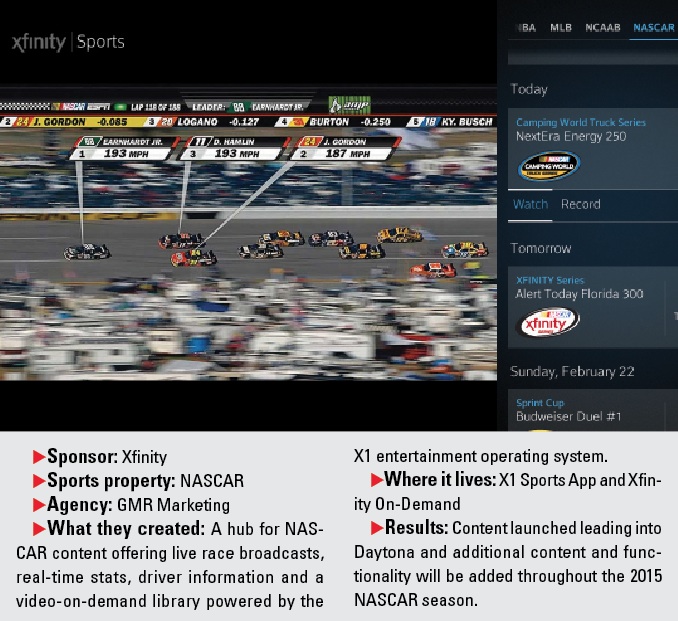Sponsors are putting more heat on sports properties to create branded content that can further help them reach savvy consumers who are easily distracted and looking to be entertained.
While sports provide a baseline affinity lift for brands seeking to connect with consumers, sponsors and properties know they must do more to make an impact. That’s where branded content comes into play.
Sponsors clearly have a focus on developing collaborative, authentic, creative and customer-serving content. Sports properties are taking a step forward in offering services to brands, putting their marks on what ultimately becomes a mutually beneficial initiative that builds value and credibility for both partners. Perhaps most importantly, they are co-creating content that is meant to be shared, putting shelf life in the hands of the consumer.
So, how are the decisions made with regard to what sponsors get in the form of sports property assets?
It’s evident that properties are becoming more open to the ideation process. Agencies, brands and properties are sitting down to discuss strategy. Much of the discussion is moving away from traditional assets, which opens a new world of possibilities.
“[The dynamic] is changing. It used to be much more recommendation-based,” said Bob Bowman, president of business and media at Major League Baseball. “Now it’s much more of a collaborative process. Everyone has accepted that immersive advertising is not a bad thing. The smart people at the brands and agencies are focused on what the sponsorship should look like rather than just a 15-second pre-roll.”
MLB Advanced Media provides its partners with a full-service design and production team for creating and
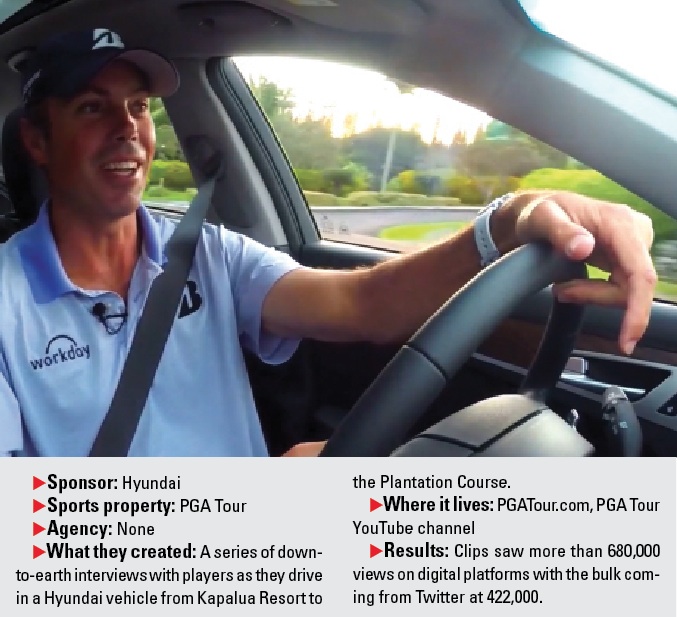 |
| Photo by: PGA Tour |
executing branded content strategies.
“Seventy percent of their time is spent on working with sponsors and partners in creating content that is more immersive than a simple display ad or brought to you by,” Bowman said. “Branded content has become the norm, and it is no longer a one-way street for leagues.”
Agencies offer a similar take on this process.
“From our vantage point at GMR, we are always looking for something unique and proprietary,” said Todd Fischer, vice president of client marketing at GMR Marketing, which counts SAP, Hershey’s, Bacardi and NetApp among its clients on content projects. “What we are often trying to do is connect fans to passion points, and a lot of that happens beyond the court. You don’t want to be repetitive. You want to be complementary and extend the reach of your audience.
“The rights holder understands the importance of telling stories beyond the traditional rights and assets. They are providing access to brands in order to generate something of value to the fan base.”
What types of branded content are trending in the sports industry? Reality-inspired video and packaged highlights are at the top of the list. The key to creating value lies in how entertaining a piece of content is and how far it can be carried by the power of social sharing. Brands aim to leverage the consumer as a marketing channel, and this has proved to be a crucial part of the creative process for sponsors and properties.
 |
| Photo by: NHL |
The NHL and GoPro have struck gold in this category with their collaborative partnership. Launched during All-Star Weekend, GoPro cameras were hooked up to NHL players and highlight reels of them showcasing their skills were cut and delivered to fans. According to the NHL, the completion rate for these co-branded three-minute videos is above 90 percent.
“This initiative brought a new audience to us and a new audience to GoPro with only a 15 percent overlap,” said Bob Chesterman, senior vice president of programming and production at the NHL. The video clips live on NHL.com and GoPro’s YouTube Channel where fans can view them and upload their own versions. The weekly installment has generated buzz outside digital platforms as well, being picked up by U.S. media outlets.
“This program connects with consumers on an incredibly emotional level,” said Karen Gordon, vice president of NHL.com ad sales. “The content is incredibly popular because you haven’t seen hockey shot in these particular angles, and the quality is exceptional.”
Gordon said the video content also is something that fans are eager to consume and share socially. “Brands retweet and share to their fan bases via Twitter and Facebook,” she said. “They post within their own websites and on their YouTube channels.”
 |
| Photo by: Courtyard |
Talent agency Playbook Inc. represents Rich Eisen, longtime anchor of the NFL Network. Playbook negotiated a deal with IMG on behalf of Eisen that made him the face of the Courtyard by Marriott brand of hotels. From this partnership, a campaign was born that saw success both over the airwaves and on digital platforms. Eisen gave fans a hidden camera surprise in Courtyard by Marriott lobbies, offering them a giveaway.
In February this year, lucky fans got the “Super Bowl Check-in” during Super Bowl XLIX, a face-to-face surprise encounter with Eisen offering free tickets to the Super Bowl. The branded spots reside on Courtyard by Marriott’s YouTube channel and also have seen promotion on Eisen’s social feeds.
“Courtyard by Marriott saw great value in the authenticity of having Rich as the face of their campaign,” said Reed Bergman, president and CEO of Playbook. “Authenticity and credibility are critical, and marketers are becoming more sophisticated in their investment strategies. If it’s not believable that Rich Eisen would be staying at a Courtyard, then an advertiser responsible for the brand will not be interested in Rich Eisen.”
The PGA Tour offers another example of reality-based video content with their Hyundai Ride-Along series featuring Zach Johnson, Matt Kuchar and Hunter Mahan. The content is a series of interviews with those players as they ride from Kapalua Resort to the Plantation Course in a Hyundai vehicle. As each player drives, he answers casual questions about his game and preparation tactics. These videos showcase both the vehicle and the player in a realistic way. They reside on PGATour.com and the PGA Tour’s YouTube channel.
Along the lines of offering more to consumers than just marks and banner ads, there is a clear value in actually providing something useful to them.
With the help of the MLBAM production team, Domino’s launched the #DomiNoNo campaign in 2013, pledging to give away 10,000 pizzas for each of the first two no-hitters pitched in the MLB regular season. In 2014, the campaign expanded to 20,000 free pizzas for each of the first, second and fourth no-hitters. Leveraging the MLB.com audience and social platforms like Twitter and Facebook, Domino’s saw all free codes redeemed in fewer than 5 minutes total. As part of the deal, footage of the no-hitter was packaged and distributed to fans, branded with the #DomiNoNo tagline.
In college sports, the tune is a bit different due to NCAA regulations on sponsor activation. Creativity is crucial, and successful brands like Allstate have been able to leverage their partnerships by delivering value directly to fans.
For the second year in a row, Allstate will distribute its proprietary Mayhem Bracket Predictor tool to its customer base via local agents. This tool was created in partnership with Stats and IMG Consulting, providing Allstate customers with assistance in making bracket selections by spelling out likely outcomes. This piece of branded content is a play on the humanity of the insurance industry, adding personality and value to the brand via its sponsorship of the NCAA.
Probably the most direct example of branded content distribution is the result of the new partnership between Xfinity and NASCAR. Because Xfinity is a large-scale content provider and distributor, this partnership has serious power behind it. With NASCAR fans in mind, content (live coverage and race information) is packaged and delivered within the Xfinity Sports app that is accessible on smart TVs. Video-on-demand is also part of the deal, so courtesy of Xfinity’s X1 platform, fans of the sport will have no shortage of racing content.
“Coming into the NASCAR landscape as a new partner, Xfinity must build legitimate credibility with the fan base,” said GMR’s Fischer. “By enhancing the fan experience with Xfinity products and services, trust can be established over the long term.”
Amie Sheridan is a writer in Philadelphia.


